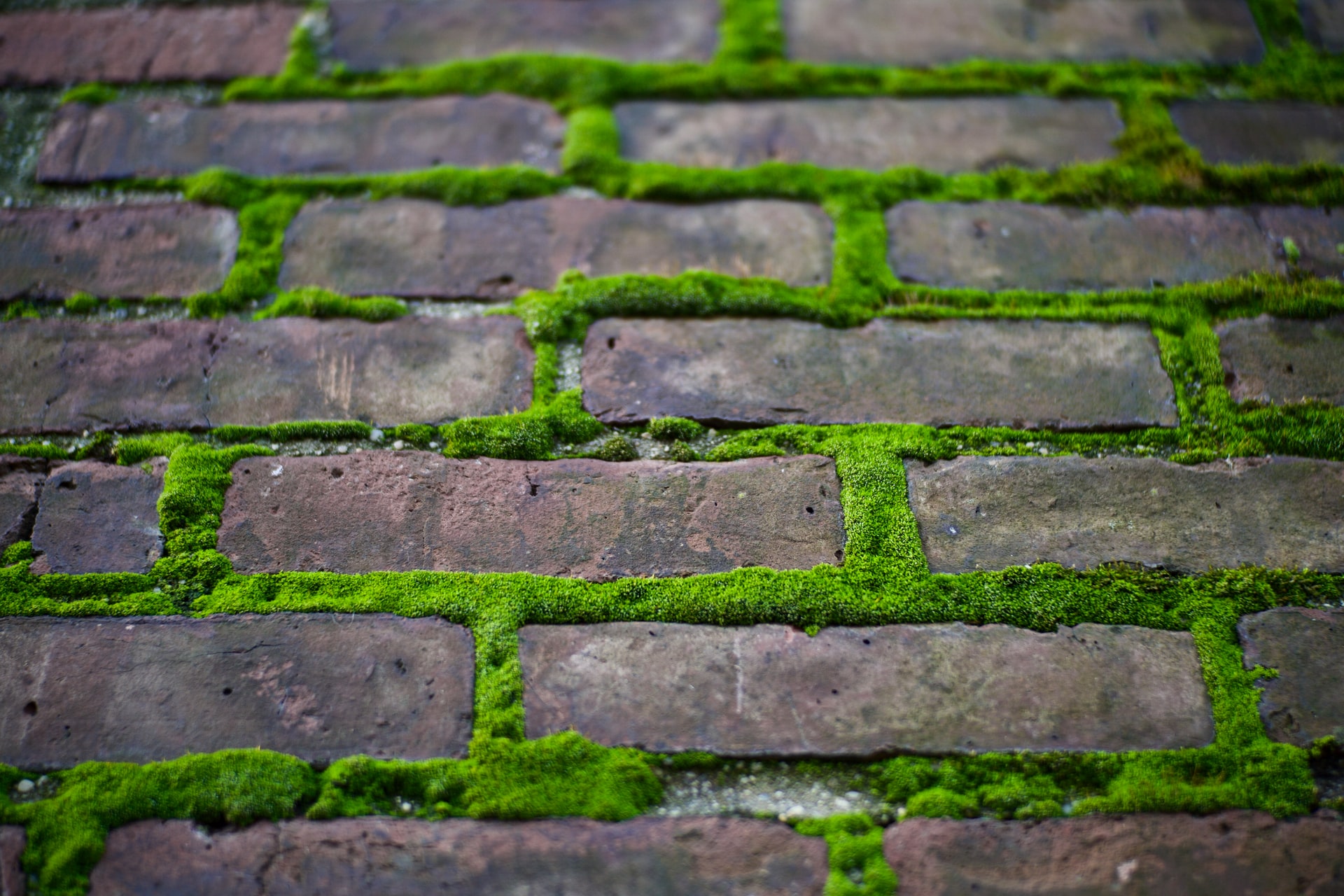Having a fireplace in your home is a delight of its own, especially on cool fall evenings or when weathering a frigid winter. If you use your fireplace regularly, it needs to be inspected and maintained regularly to prevent health and safety issues, including moss build up. This step is crucial whether the fireplace was part of a new construction or it came with a home you bought from someone else.
One of the most crucial maintenance checks you can do for yourself is to take a look at your chimney from the outside. You don’t even need to get on the roof, just check out your stone or brick chimney. If you see anything green growing on it, your chimney has a moss or lichen there’s a deeper problem. This growth indicates a serious issue that needs to be resolved as soon as possible to prevent long term damage. Here is an overview of what moss and lichen problems mean and what you can do to fix it.
What Causes Moss to Grow?
Moss and lichen are members of the algae family. Plants in this family are found in aquatic environments. Their land-faring cousins, moss and lichen, tend to favor damp, shady environments with excessive moisture.
When you see moss or lichen growing on a chimney or rooftop, it indicates that water is being trapped by the brick and mortar. If the area remains damp for a long period of time, then the moss or lichen starts to take hold. This degrades the structure of both bricks and mortar, causing the structure to crumble. Moss and lichen also retain the water they have absorbed when they freeze, too, which can make the issue go from bad to worse.
How Does Moss, Lichen and Algae Damage Your Chimney?
Throughout the winter and into the spring, moss and lichen compress their retained water against the masonry. Eventually, that moisture works its way into the surface of the mortar and brick where it freezes and thaws inside the masonry. The contraction and expansion of the water as the weather fluctuates cause permanent damage to the masonry.
As your masonry crumbles, water begins to leak into the ceilings and down walls. Over time, it creates invisible water damage that you may not notice for months or years. Fixing water damage after an extended time period is almost always expensive and can have a severe negative impact on the value of your home.
Worse still, there is one species of algae that eats limestone, cement, mortar and even roof shingles. An infestation by this alga, known as gloeocapsa magma, can result in thousands of dollars in property damage and repairs if left unchecked.
If you see green on your brickwork or roofing call a professional stonemason right away. The longer you wait, the greater the damage could be. Fortunately, there are several ways that moss, lichen and algae can be safely removed from your roof and chimney. Here’s how we handle it for our customers at Ray Arnold Masonry & General Contracting.
How to Remove Moss, Lichen and Algae?
Treating a chimney for moss, lichen and algae is a multi-step process.
First, we inspect the outside of the chimney for damage. We make a note of all problem areas, including any visibly crumbling bricks, stones or mortar. During this inspection, we also check for biological growth like moss and lichen on the chimney to determine the extent of the infestation.
Next, we decide the best course of action to eliminate the moss problem and make the chimney whole again to keep the moss from coming back. Typically, we use a pressure washer to clean the outside of your chimney to eliminate the moss, lichen and other biological growths that may be present on the chimney.
After pressure washing, we find and repair any cracks, leaks or other broken masonry on your chimney. This prevents moss problems in the future. Finally, coat everything with a water sealant to protect it from future moisture build-up. High-quality sealant repels water even as it pools on surfaces, as well as stays breathable so that it doesn’t trap existing moisture in the material causing further breakdown.
Ray Arnold Masonry and General Contracting serves homeowners in the greater Cleveland, Akron and surrounding areas. Contact us today so we can help you deal with your chimney moss before it gets out of control.

